The Brickworks
Work to erect the brickworks at Hamstead began in 1876 at the same time as the colliery was being developed. A 1968 photo of the derelict brickworks shows the chimney of the brickworks has the date of 1876 incorporated into the pattern of the brickwork.

Research by Martyn Fretwell has concluded that the colliery owned the brickworks between 1876 and 1888 before independant brickmakers took it on, It came back under the control of Hamstead Colliery (1930) Ltd in 1939 and later by the National Coal Board (NCB) until it's closure.
William Bradford, 14, Franchise Street, Perry Barr, works, Hamstead, Birmingham. is shown in the Kelly's directories of 1888, 1890 and 1892
Joseph Sheldon is listed with the works address of Old Walsall Road, Hamstead, Handsworth in the Kelly's 1895, 1897 and 1900 editions
Turner & Hadley is listed at the Old Walsall Road, Hamstead works in Kelly's directories for 1903 to 1927.
Albert Stephenson writes in his 1933 book that "J.R. Turner was a builder who consumed most of the bricks produced at Hamstead & his partner William Hadley, was a very pushful salesman who was a "thorn in the flesh" to other Birmingham Brickmakers, until he joined with them in setting up the Brickmakers Association in 1917. After the retirement of Mr. Turner, "Billy" Hadley ran the yard until his expiration of his lease in 1927."
Hamstead Brick Co. had taken over the brickworks from Turner & Hadley with this new company advertising they had recently installed a new kiln in 1929. The Hamstead Brick Co. is first listed in Kelly's 1932, 1933, 1936 and 1937 editions with the address of Old Walsall Road.
The kiln was said to be of a type invented by Alvis Habla of Czechoslovakia. The kiln was 84 ft long and 63 ft wide and was of the zigzag Hoffman type. The Hamstead Brick Co. spent £25,000 pounds on the modernisation of the works and this new kiln was capable of producing 250,000 bricks per week.
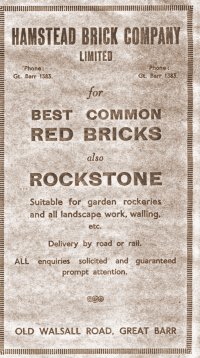
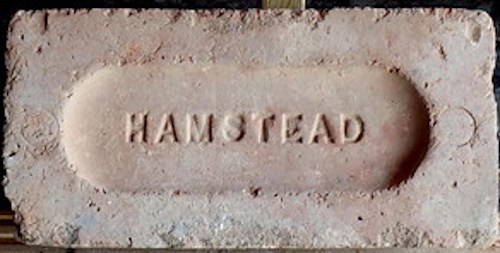
The company later stated that it operated a Staffordshire Continuous Kiln containing 20 burning chambers, each holding 20,000 bricks. Shale for brickmaking was brought from Hamstead Colliery by an aerial ropeway. It would appear that the brickworks was absorbed by the National Coal Board along with the colliery in 1947. In 1963 the works was producing pressed commons but in March 1965 the colliery closed and the brickworks was certainly long closed by 1968.
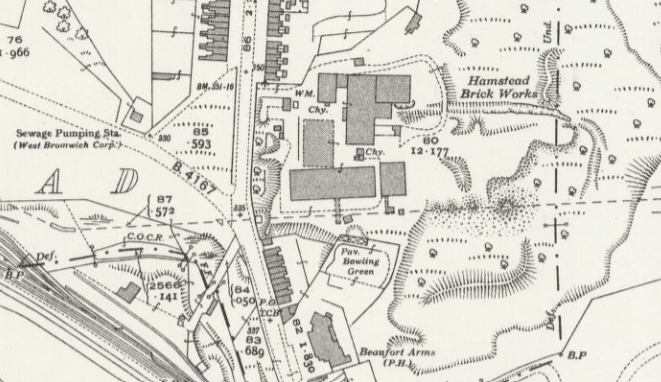
An article in London Gazette dated 28th of December 1937 reports that the Hamstead Brick Co. went into voluntary liquidation on the 22nd of December 1937 & this process was finalised on the 30th of September 1940 when liquidator, Kenric Allday set out his accounts of the winding up & dispersal of the Company's assets.
£25,000 was spent on the Brickworks. The works was capable of producing 250,000 bricks per week.
Hamstead Colliery (1930) Ltd took over the brickworks.
National Coal Board took over the brickworks on nationalisation in 1947 until closure in 1965.
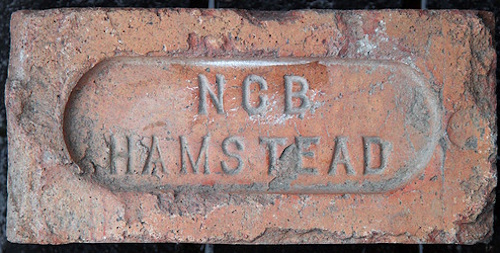
Images of the Brickworks
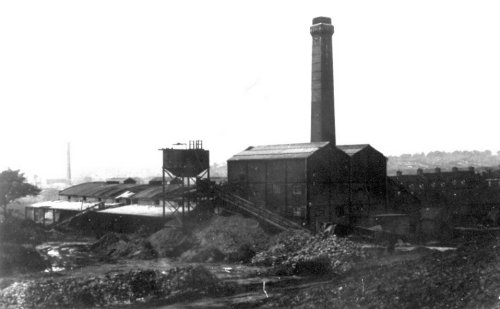
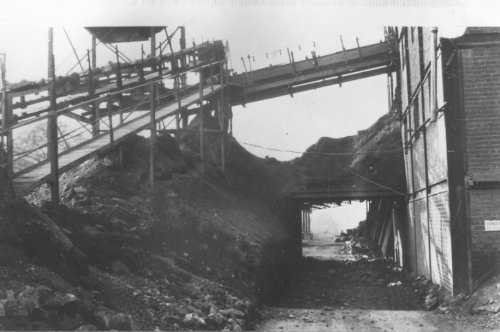
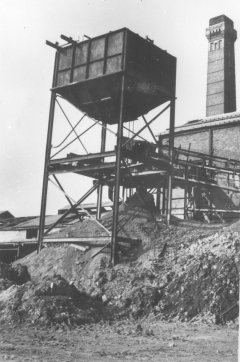
The Aerial Ropeway
Special equipment allowed shale from the pit to be used in the production of bricks. An aerial rope-way linked the pithead to the brickworks to transfer the shale from the mine direct to the brick making plant and for disposal of material previously tipped on the mound. This crossed the Old Walsall Road at the end of the village.
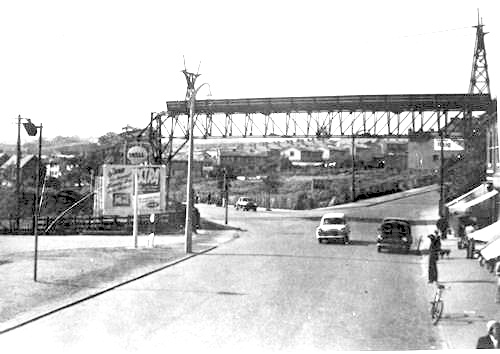

References:
Martyn Fretwell UK Named Bricks https://uknamedbricks.blogspot.com/search?q=hamstead
Albert H. Stephenson (1933) The Trade Associations of Birmingham Brick Masters 1864-1933 (London: The Chichester Press).
Maps: Reproduced with the permission of the National Library of Scotland
